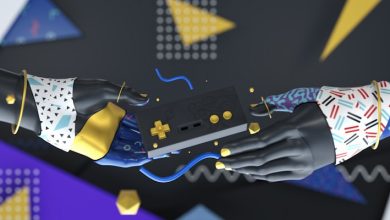How Blockchain Is Being Used in Education

- Introduction to Blockchain Technology
- Benefits of Implementing Blockchain in Education
- Examples of Blockchain Applications in Educational Institutions
- Challenges and Limitations of Using Blockchain in Education
- Future Trends of Blockchain Technology in the Education Sector
- Ensuring Data Security and Privacy with Blockchain in Education
Introduction to Blockchain Technology
Blockchain technology is a revolutionary innovation that has the potential to transform various industries, including education. **Blockchain** is a decentralized, distributed ledger that securely records transactions across a network of computers. This technology ensures transparency, security, and immutability of data, making it an ideal solution for educational institutions looking to streamline their operations and enhance data integrity.
One of the key benefits of **blockchain** in education is its ability to securely store and verify academic credentials. By using blockchain, educational institutions can create tamper-proof digital records of students’ achievements, such as degrees, certificates, and diplomas. This not only reduces the risk of fraud but also simplifies the process of verifying qualifications for employers and other institutions.
Moreover, **blockchain** can facilitate the creation of a decentralized learning ecosystem where students can access educational resources, courses, and credentials from anywhere in the world. This can help bridge the gap between traditional education systems and the growing demand for lifelong learning and upskilling in today’s fast-paced digital economy.
In addition, **blockchain** technology can enable the creation of smart contracts in education, automating processes such as course enrollment, fee payments, and certification issuance. This can help reduce administrative overhead and improve the efficiency of educational institutions, allowing them to focus more on delivering quality education to students.
Overall, **blockchain** technology has the potential to revolutionize the education sector by enhancing data security, streamlining operations, and increasing accessibility to learning resources. As more institutions and organizations adopt **blockchain** solutions, the future of education is poised to become more transparent, efficient, and student-centric.
Benefits of Implementing Blockchain in Education
Implementing blockchain technology in education offers a wide range of benefits that can revolutionize the way educational institutions operate and students learn. Some of the key advantages of using blockchain in education include:
- **Transparency**: Blockchain provides a transparent and secure way to store and verify educational records, ensuring that they are tamper-proof and easily accessible.
- **Security**: The decentralized nature of blockchain makes it highly secure, reducing the risk of data breaches and unauthorized access to sensitive information.
- **Credential verification**: With blockchain, credentials such as diplomas, certificates, and transcripts can be easily verified by employers and other institutions, eliminating the need for manual verification processes.
- **Cost-efficiency**: By streamlining administrative processes and reducing the need for intermediaries, blockchain can help educational institutions save time and money.
- **Data integrity**: Blockchain ensures the integrity of data by creating a permanent and unchangeable record of transactions, making it ideal for storing academic records and other important information.
Overall, the implementation of blockchain in education can lead to increased efficiency, improved security, and greater trust in the education system. As more institutions adopt this technology, the benefits of blockchain in education are becoming increasingly apparent.
Examples of Blockchain Applications in Educational Institutions
Blockchain technology has found various applications in educational institutions, revolutionizing the way data is stored and managed. Some examples of how blockchain is being used in education include:
- **Credential verification**: Blockchain allows for secure and tamper-proof verification of academic credentials, making it easier for employers and other institutions to verify the authenticity of a student’s qualifications.
- **Secure record-keeping**: Educational institutions can use blockchain to securely store student records, ensuring that sensitive information such as grades and attendance records are kept safe from unauthorized access.
- **Smart contracts for student agreements**: Smart contracts can be used to automate student agreements, such as those related to course enrollment, tuition payments, and academic progress, streamlining administrative processes.
- **Decentralized learning platforms**: Blockchain technology can be used to create decentralized learning platforms, where students can access educational resources and interact with instructors and peers without the need for intermediaries.
- **Micro-credentialing**: Blockchain enables the issuance and verification of micro-credentials, allowing students to showcase their skills and achievements in a transparent and verifiable manner.
These examples demonstrate the diverse ways in which blockchain is being integrated into educational institutions, offering increased security, transparency, and efficiency in various aspects of the education sector.
Challenges and Limitations of Using Blockchain in Education
There are several challenges and limitations associated with the use of blockchain technology in the field of education. While blockchain has the potential to revolutionize the way educational records are stored and verified, there are still some obstacles that need to be overcome.
- One of the main challenges is the issue of scalability. Blockchain technology can be slow and inefficient, especially when it comes to processing a large number of transactions. This could be a significant barrier to widespread adoption in the education sector.
- Another limitation is the lack of standardization. Different educational institutions may use different systems for storing and verifying records, which could make it difficult to create a unified blockchain solution that works for everyone.
- Security is also a concern when it comes to using blockchain in education. While blockchain is known for its security features, there is still the risk of hacking and data breaches, which could compromise the integrity of educational records.
- Moreover, there is a lack of understanding and awareness about blockchain technology among educators and students. Without proper education and training, it may be challenging to implement blockchain solutions effectively in educational settings.
In conclusion, while blockchain technology holds great promise for the field of education, there are still several challenges and limitations that need to be addressed before it can be widely adopted. By overcoming these obstacles, we can harness the full potential of blockchain to transform the way educational records are managed and verified.
Future Trends of Blockchain Technology in the Education Sector
Blockchain technology is poised to revolutionize the education sector in the coming years. One of the key future trends in this area is the use of blockchain for secure and tamper-proof academic credential verification. By storing academic records on a blockchain, educational institutions can ensure that credentials are authentic and cannot be falsified. This will streamline the process of verifying qualifications for employers and other institutions.
Another trend is the use of blockchain for creating decentralized learning platforms. These platforms will allow students to access educational content from around the world, without the need for intermediaries. This will democratize education and make it more accessible to a wider audience. Additionally, blockchain can be used to track and reward students for their learning achievements through digital badges and certificates.
Furthermore, blockchain technology can facilitate the creation of smart contracts in the education sector. Smart contracts are self-executing contracts with the terms of the agreement between the parties directly written into lines of code. In education, smart contracts can be used for managing student enrollment, tuition payments, and even academic research collaborations. This will help reduce administrative overhead and ensure transparency in educational transactions.
Overall, the future of blockchain technology in the education sector looks promising. As more institutions and organizations adopt blockchain solutions, we can expect to see increased efficiency, transparency, and security in the way education is delivered and managed. It is essential for educational stakeholders to stay informed about these trends and be prepared to embrace the changes that blockchain technology will bring to the field of education.
Ensuring Data Security and Privacy with Blockchain in Education
Blockchain technology is revolutionizing the education sector by ensuring data security and privacy. By utilizing blockchain in education, institutions can securely store and manage student records, certifications, and other sensitive information. This decentralized system eliminates the need for a central authority, reducing the risk of data breaches and unauthorized access.
With blockchain, each transaction is securely recorded and verified across a network of computers, making it nearly impossible to alter or manipulate data. This level of transparency and immutability ensures the integrity of student records and protects against fraud. Additionally, blockchain technology allows for secure sharing of data between educational institutions, employers, and other relevant parties.
By implementing blockchain in education, institutions can enhance trust and credibility in the education system. Students can have confidence that their academic achievements are accurately represented, while employers can verify the credentials of potential hires with ease. Overall, blockchain technology offers a secure and efficient solution for managing data in the education sector.






